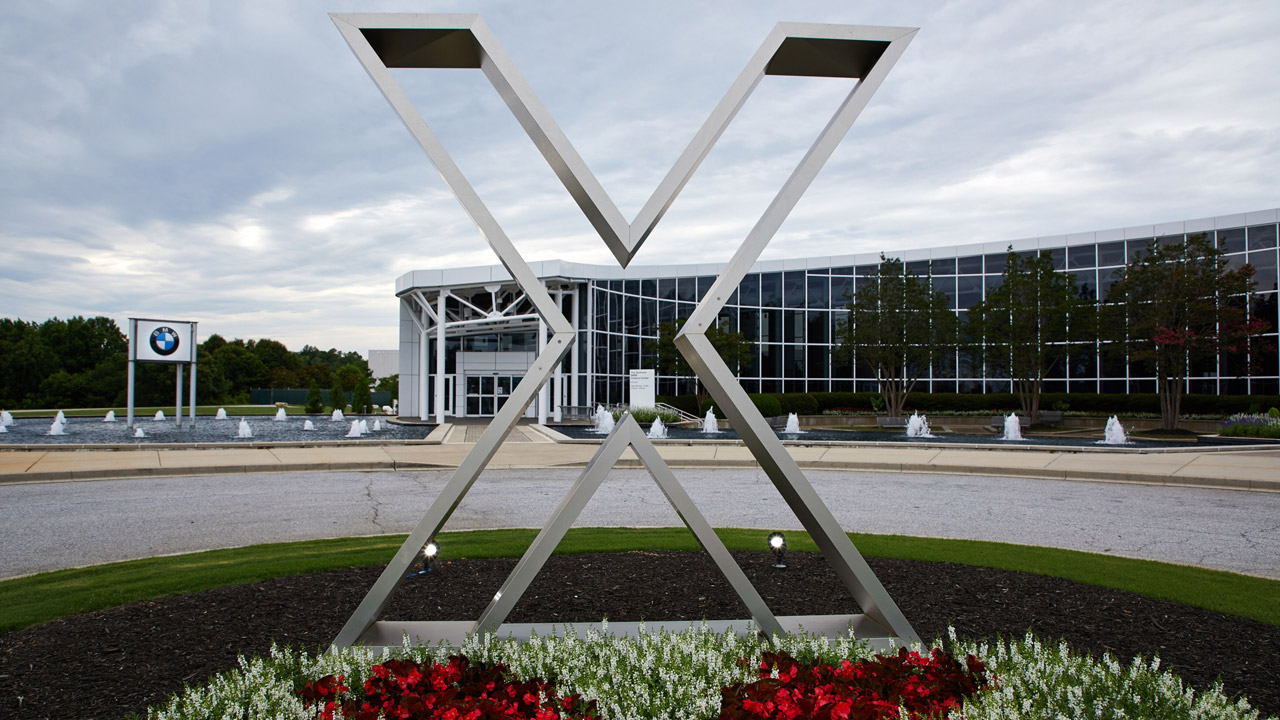The Associate Family Health Center, is a 25,143 square foot single story private medical office located adjacent the BMW Manufacturing campus in Spartanburg, South Carolina. The facility is owned by BMW and managed by Premise Health, a contract medical company to provide health services to associates and their families.
The project offers a sustainably-improved facility with minimal impact to cost, operations, aesthetics or comfort that has achieved LEED Silver certification. Opportunities for sustainability and efficiency were identified at the earliest stages of design. State-of-the-industry, over state-of-the-art, approaches to design and construction were implemented to support ease of operations and maintenance.
To learn more about sustainable design, green building operations, and greening your own home or office environment visit www.usgbc.org.
Associate Family Health Center.
A changing room/shower facility along with bicycle racks are located outside the employee entrance. They can accommodate bike storage for a minimum of 5% of staff, patients, and visitors.
LEED #SSc4.2
5% of parking spaces have been reserved for low-emitting and fuel efficient vehicles. Vehicles with a 39+ ACEEE score meet this definition. Visit greenercars.org for a listing of cars with this rating. Most manufacturers have qualifying cars exclusive of hybrids. With the transportation sector consuming 28% of all energy, fuel economy is a key to CO2 reduction.
LEED #SSc4.3
20% of the site is reserved vegetative open space; zoning does not require an open space reserve. Potential future development was considered when identifying open space reserves.
LEED #SSc5.2
The storm water retention capability reduces the rate of water flow from the site. 90% of the Total Suspended Soils (TSS) are treated on-site via structural controls and a rain garden. A system to slow storm water runoff rates and protect downstream channels from excessive erosion has been designed and constructed.
LEED #SSc6 |
|
Roofing materials with a Solar Reflectance Index (SRI) of 101 was installed to reflect heat away from the building and site thus reducing air conditioning load and the potential for an increase in localized site temperature.
LEED #SSc7.2 |
|
Native and adaptive plants were selected and incorporated into the landscape reducing by 85% of the need for a permanent irrigation system. The plants can thrive on rainwater when the soil is properly prepared with a thick mulch topping to trap moisture.
LEED #WEc1 |
|
Significant water savings are achieved through installation of high-efficiency plumbing fixtures. The fixtures include toilets, sink faucets, and a shower. By utilizing the higher-efficiency fixtures, it is projected to use 45% less water than it would if minimum code-compliant fixtures had been installed. This also saves operating costs.
LEED #WEc3
Energy savings of 14.6% are projected above a base line, code-compliant building. This also reduces the contribution to ozone depletion by utilizing systems that do no use CFC-based refrigerants, HCFCs, or halons.
LEED #EAc1 |
|
70% of the building’s projected energy is being provided from renewable sources for the first two years of operation.
LEED #EAc6 |
|
82% of construction debris generated by this project has been diverted from local landfills and recycled into new products.
LEED #MRc2
Post-consumer and pre-consumer products represent 21% of the cost of products utilized in the construction of this facility. Creating a market for products with recycled content helps to reduce the impact resulting from extraction and processing of virgin materials. Drywall, carpet, ceiling grid and tiles, doors and insulation are just a few of the recycled-content material installed in the Associate Family Health Center building.
LEED #MRc4
31% of materials have been manufactured and harvested, mined or recovered within 500 miles of this construction site and help reduce the transportation burden associated with new construction. Local employment is supported through the use of regional materials. Brick, concrete, steel, and carpet contain local materials and were manufactured within a 500 mile radius.
LEED #MRc5
The Center aims to provide a safe environment for all employees and clients by offering a smoke-free environment. A Smoking Policy has been adopted to protect building occupants from exposure to secondhand smoke by declaring the building and campus a non-smoking facility. Smoking is prohibited in the building and on the site.
LEED #EQpr2 |
|
An indoor air quality plan was implemented during the construction of this project to reduce indoor air quality problems resulting from the construction process. Strategies to improve air quality include HVAC protection from dust, source control via the specification of materials with low VOC levels, pathway interruption, housekeeping, and scheduling. Porous materials were protected from exposure to moisture and stored in a dry area prior to installation.
LEED #EQc3
The Center promotes a healthy and enjoyable work environment for all of the building’s occupants. One way this is achieved is through the access to lighting controls, allowing employees to easily adjust the lighting levels to suit their specific needs.
LEED #EQc6.1 |
|
A permanent carbon dioxide (CO2) monitoring system has been installed throughout the building. It provides feedback on space ventilation performance and allows operational adjustments to keep indoor CO2 levels at the same rate as exterior levels.
LEED #EQc1
Exposure of building occupants by potentially hazardous particulates and chemical pollutants is minimized through the installation of MERV 13 HVAC filters, 6’ long walk off mats at building entrances, and the isolation of chemicals throughout the building.
LEED #EQc5 |
|
Volatile Organic Compounds (VOCs) are what contribute to “new/renovated building” odor and can cause building-related illness. Low or no-VOC products were installed in this building. Some of the project materials include paint, carpet, adhesives, and sealants.
LEED #EQc4 |
|


